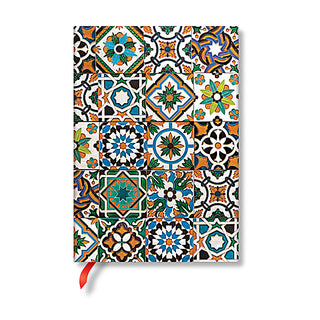-
Azulejos (meaning small polished stone) are painted, glazed ceramic tiles that date back to 13th-century Portugal where they were used inside buildings during the Gothic period. Today, we see these decorative tiles across a wide range of buildings, from monasteries, palaces and restaurants to bars, railway stations and family homes. The design on the tiles commonly related to the building's unique history, and the individual pieces often end up forming an elaborate mosaic.
The design seen here is pulled from the traditional tiles gracing the facades of a variety of old houses in Porto, Portugal. Ornate in detail, these tiles do not just serve as decoration but represent an important part of Portuguese culture and tradition.
Azulejos (meaning small polished stone) are painted, glazed ceramic tiles that date back to 13th-century Portugal where they were used inside buildings during the Gothic period. Today, we see these decorative tiles across a wide range of buildings, from monasteries, palaces and restaurants to bars, railway stations and family homes. The design on the tiles commonly related to the building's unique history, and the individual pieces often end up forming an elaborate mosaic.
The design seen here is pulled from the traditional tiles gracing the facades of a variety of old houses in Porto, Portugal. Ornate in detail, these tiles do not just serve as decoration but represent an important part of Portuguese culture and tradition.




